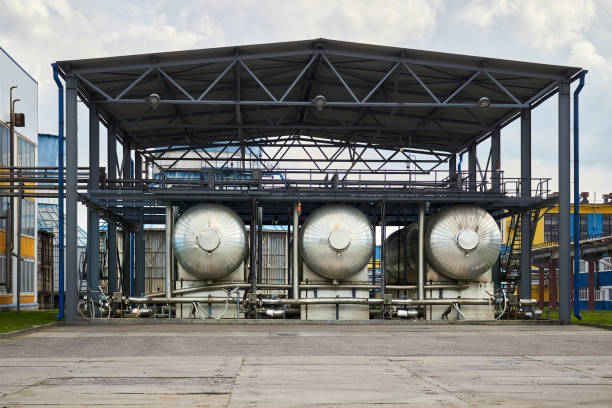July 05, 2022

A biocide is a chemical solution that is formulated to effectively manage
microbial growth. Uncontrolled growth in microbial populations can cause a range
of the risk of illness and biofilms, chemical breakdown, heat transfer losses,
limitation of flow, and under-deposit corrosion.
It is essential that the right biocidal treatment method is employed and that
periodic checks are done to ensure that there are no microbial colonies in any
of the systems that include drinking water, downwater services processes water
services, closed circuits, and recreational waters.
Controlling microbial growth is possible by making sure systems are clean
upon startup and as often as is needed.
Types of biocide
There are two basic kinds of biocides, namely oxidising and non-oxidising.
Bromine, chlorine dioxide and hydrogen peroxide are all examples of biocides
that are oxidising. Bronopol and THPS are two examples of non-oxidising
biocides.
There are many factors to consider when selecting the biocide chemical, whether it is a
biocidal flush, maintenance dose or shock dose biocide. This includes contact
time, temperature, pH and compatibility. Additionally, the effectiveness against
the presence of microbes. Technical assistance can assist you in selecting the
appropriate biocide.
Oxidising biocide
The majority of oxidizing biocides are able to be utilized in less
concentrations than non an oxidizing biocides. This is why they are more
affordable.
Ultralox 40'", a proprietary active chloride solution is one of our main
chemicals. It eliminates water-borne microorganisms quickly and disintegrates
biofilms that contain pathogens. Ultralox 40'" is highly effective against
planktonic as well as sessile microorganisms. It can be used for water hygiene
purposes and pipework treatment to swiftly get rid of Legionella. Pseudomonas
and other microbes.
Chlorine dioxide
The excellent broad-spectrum oxidising biocide chlorine dioxide is a
versatile range of uses. It is employed for disinfection and sanitisation and
water treatment. Chlorine dioxide is 2.5x more effective than chlorine in
oxidizing and has a much shorter time to contact. The pH 10 pH range is the pH
range where chlorine dioxide functions well. Biocide such as sodium
hypochlorite, that are able to lose their effectiveness rapidly when pH rises is
not advised to be used at pH levels higher than 8. One of the main advantages of
using chlorine dioxide is that unlike many other biocides it is able to destroy
biofilm
Most of the chlorine dioxide doesn't react with water treatment chemicals or nitrogen compounds like ammonia, or natural organic materials like organic acids. Numerous applications using chlorine dioxide are approved, such as potable water treatment, hospital water systems, and food processing sanitation.
Posted by: Technology Positive at
06:42 AM
| No Comments
| Add Comment
Post contains 426 words, total size 4 kb.
35 queries taking 0.047 seconds, 61 records returned.
Powered by Minx 1.1.6c-pink.









